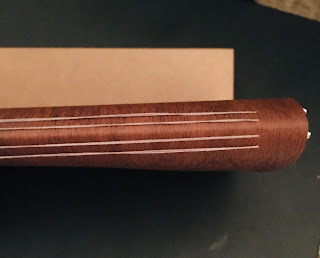Paper Roll Snowflakes By S. Washington
I think we are all aware of the toilet paper hoarding that went on early in the pandemic. Well, as we enter a third wave of COVID-19 cases spiking and more stay-at-home orders being issues around the country it’s fair to assume more hoarding will go on. And if you have tons of paper towels and toilet paper why not use the rolls to make some pretty wintertime decoration. You can use these for a Christmas tree or just as seasonal decor. You can also make these as fancy or casual as you like. There are lots of designs online so you don’t have to do the exact one that I made, be creative, and have fun.
Step One: Gather Materials
For this craft, you have lots of options. I’m using paper towel rolls but you can also use toilet paper rolls you will just need more of them. I made the star you’ll see at the end from just one roll, but the amount of rolls will depend on your design. To create your design you can use craft glue, a glue stick, staples, or a glue gun. Just use whatever works for you. I used a glue stick. You’ll also need scissors and a ruler. You’ll also need paint, glitter, and anything else you want to use to decorate your snowflakes.
Step 2: Measure your roll(s) & cut
Make marks every half-inch along the roll then cut on the marks. You can eyeball it if you feel confident or if the pieces being different sizes doesn’t bother you.
Step Three: Decide on your design
It’s always a good idea to plan out how you want your snowflake or other design to look before you start glueing.
Step Four: Glue, Paint, and Decorate
Since I used a glue stick I used paper clips to hold the pieces in place while the glue dried. This only took maybe a minute or two. This step will not be necessary with the hot glue; it’ll hold after a few seconds. If you’re using craft glue you will probably need to wait longer than with the glue stick. You could also use staples if you don’t mind seeing them on your snowflake. Using staples will eliminate the wait time and the need for hot glue which can be messy.
Once all the pieces are glued in place you can then paint it. You can use acrylic paint or spray paint for fuller coverage. I liked the look of a light brushing of white paint, it gave it a weathered look. I use some scrap paper to protect my surface from excess paint. Then you can brush on craft glue or use a spray adhesive to stick on some glitter. You could also use strips of glitter scrapbook paper instead of these paper rolls and just make the same shapes.
Step Five: Hang up your decorations
Congrats, you have turned some trash into holiday/winter decor treasure! I used some floral wire to attach mine to this small tree but you could use ribbon and hang them in windows or from the ceiling; you can display them any way that makes you happy. These snowflakes are a nice alternative to cutting out paper snowflakes and if you use metallic paint they can look very high-end. Enjoy creating your winter wonderland.









